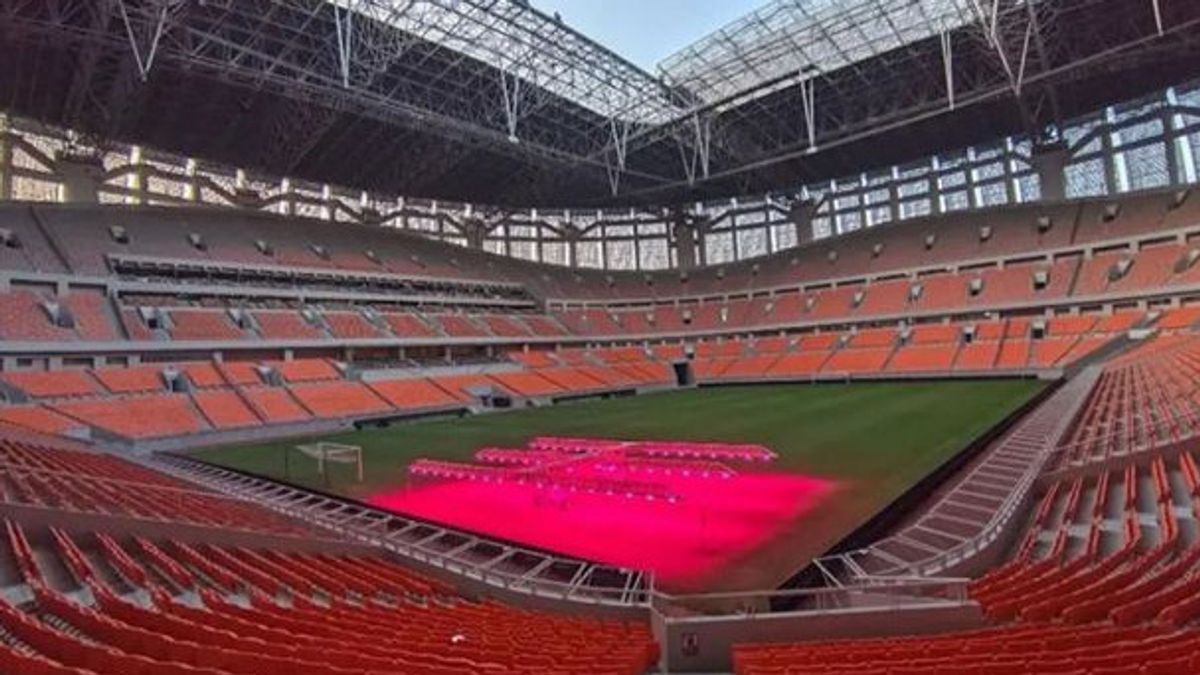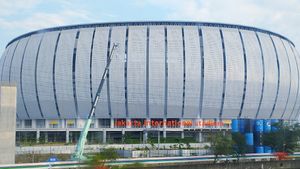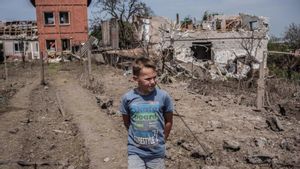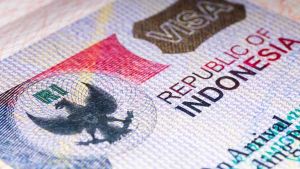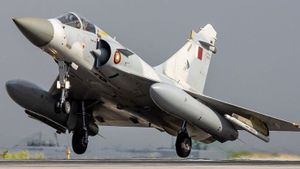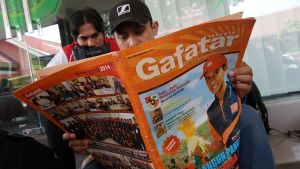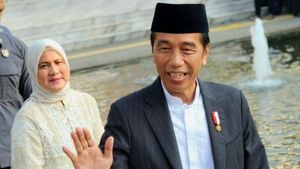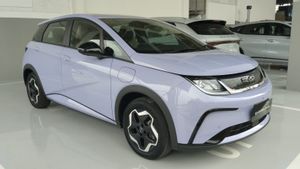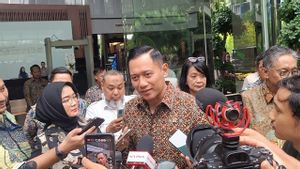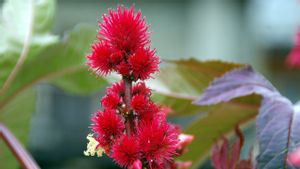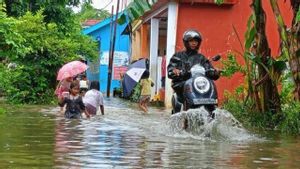JAKARTA The JIS Stadium problem has continued to run aground since the first time the idea of the Jakarta prided football arena was raised. Until now, the commotion about JIS has not ended, it was even more noisy when Indonesia was appointed to host the U-17 World Cup.
Regarding the JIS standard of feasibility, a large stadium with a capacity of 82 thousand spectators has become a topic of debate. One of the most controversial is the grass issue used in the stadium, which is said to be not in accordance with the International Football Sepal Federation (FIFA) standard. So how exactly is the standard imposed by FIFA for the grass of a football stadium?
The development of football, including its facilities, continues to adapt to the progress of the times and technology. Football activities can no longer be carried out by simply cutting grass, and flattening a field. The current treatment of an international standard football field is much more complex.
At this time, a football field that is said to be based on FIFA standards does not only have natural grass. To be sure, whatever the material is, the standard FIFA surface must be green.
The use of artificial grass is permitted, with the aim of adding to the durability of a field. FIFA makes a limit, football fields that are suitable for use for an international match must be able to survive in prime condition after being used for at least 20 hours a week.
Due to the great potential of synthetic grass for the development of football and other sports, its use for the surface of the field is widely used in various regions in the world. Due to its durability to better weather, synthetic grass is an alternative to natural grass. However, because there are significant differences in quality, standardization needs to be applied," it was written in the FIFA guide for artificial grass.
Currently FIFA gives licenses to only eight artificial seaweed makers. The eight companies are: Domo Sports Grass (Belgium), Limonta Sports (Italy), Polytan (Germany), Edelgrass (Netherlands), Saltex (Finland), CCGrass (China), GreenFields (US), and FieldTurf (US).
So what about natural grass used for the field with FIFA standards? The organization that owns world football divides the quality of the field in two categories, namely the basic field and high quality field.
The quality of the field is determined based on the resources available for construction and maintenance, as written in the FIFA guide for the field with natural grass.
The basic field is said to include only regular drainage and surface and grass maintenance improvements. Fields in this category are only used for recreational activities, local football matches, or training.
While high quality fields are sophisticatedly managed fields. Fields are specially created with additional sand sheets, grass strengthening technology, heating if they are in sub-tropical areas, lights for grass growth and ventilation channels if a field is created in stadiums that are less profitable for grass growth.
If you refer to the two FIFA categories, it is undeniable that JIS is a high-quality football field. High-quality fields deserve to be used for professional and international matches.
For types of grass that can be used, FIFA divides into two categories in general, namely clumps for warm to hot, and cold climates. Grass for tropical climates can be from the type of Shallow grass (Cynodon dactylon), Seashre paspalum (Paspalum vaginatum), Zoysia grass (Zoysia matrella and Zoysia Japonica), and Kikuyu grass (Cenchrus clandestinus).
As for grass in the cool to cold climate, FIFA determines three types of grass. The three are Perennial ryegrass (Lolium perenne), Smooth-stalked Mean grass (Poa pratensis), and Tall fescue (Festuca arundinacea).
Of course, to meet FIFA standards as a high quality stadium, it is not only a matter of grass type. There are many factors ranging from design, construction, infrastructure, grass type selection, grass planting methods, maintenance, maintenance recruitment, and field performance monitoring. All of this is stated in 11 chapters FIFA guides on the field with natural grass surfaces.
The JIS Stadium field uses Zoysia Japonica grass, combined with synthetic. As much as 95 percent of natural grass, the rest are synthetic. From the type of grass selection, it is clear that JIS has met FIFA standards.
The chairman of PSSI who is also the Minister of SOEs, Erick Thohir, the grass problem at the JIS Stadium is a disease. The grass of the JIS Stadium is overgrown with weeds, as a result of lack of sunlight because the arena is equipped with a roof that can be opened and closed.
"That's why it's not evenly flat, right? If it's not flat, what do you have to do? Edemed? If it's suspended, it's not appropriate. Therefore, it must be corrected," said Erick.
"Repaired in what way? The type of grass is adjusted to the type of grass that can grow in shading or does not need a lot of sunlight," he added.
It is a bit stuck in the JIS case, because for grass maintenance in the arena it already uses Lighting Grass Growth or grass growth lights. This is also in accordance with FIFA, which requires the use of ultraviolet light assistance for the field with grass growth constraints.
"Moreover, our Stadium (JIS) is closed, so it is important for us to provide a tool called Ultra Violet. This is technology that reaches its operations and we also have the technology," said the President Director of Jakarta Propertindo (Jakpro) at that time, Widi Amanasto, Friday (10/11/2021) as quoted from Antara.
After Anies Baswedan was replaced by Heru Budi Hartono as Director of Jakpro, BUMD belonging to the DKI Jakarta Provincial Government, Widi's position was also shifted. Currently, the President Director of Jakpro is Iwan Takwin.
"Currently Jakpro is in the process of coordinating with related parties regarding the preparation, improvement and improvement of the Jakarta International Stadium (JIS) feature," said Iwan on July 11, 2023.
A VOI source who did not want to be named said that what happened at the JIS Stadium was actually normal.
"It's just a technical problem that is solved politically and cuan," said a VOI source, who often handles sports facilities development projects with government budgets.
It is better if the polemic about the JIS Stadium is over soon. Grass is replaced if it is deemed necessary, for whatever reason. However, if it is generalized that JIS Stadium does not meet FIFA standards, it feels too late.
SEE ALSO:
The English, Chinese, Japanese, Arabic, and French versions are automatically generated by the AI. So there may still be inaccuracies in translating, please always see Indonesian as our main language. (system supported by DigitalSiber.id)
